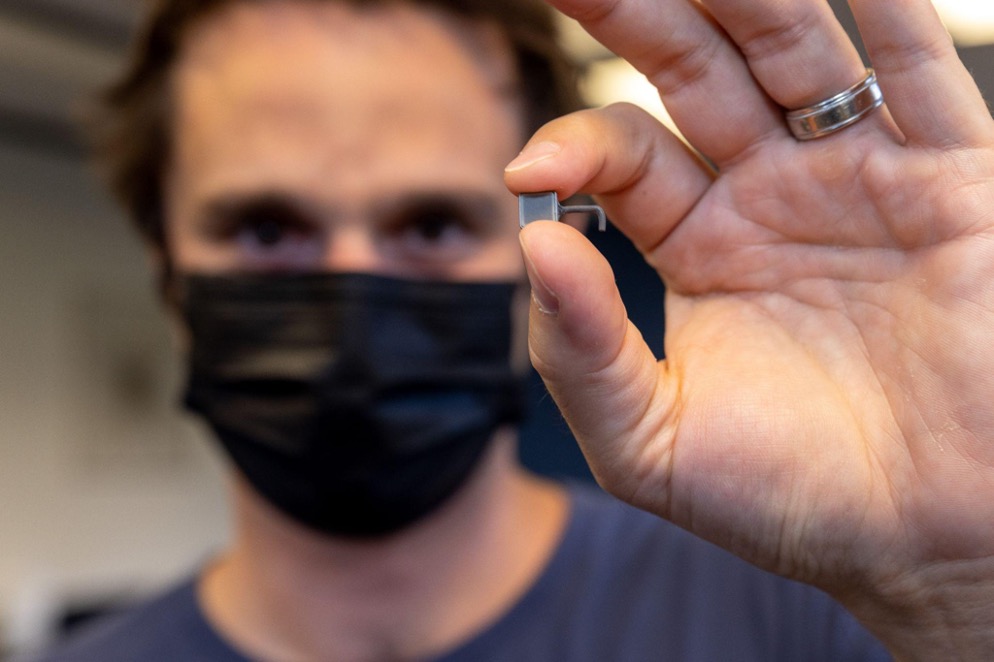
Curating your community is one of the most important investments you can make as an entrepreneur.
Your communities shape your mindsets, passions, hobbies, and ultimately your success.
For example, if you want to think big and change the world, hang out with people who have a Massive Transformative Purpose (MTP) and Moonshots.
I consider myself extremely lucky to have thriving communities in my life—from Abundance and Singularity University to XPRIZE and Fountain Life.
They inspire me, challenge my thinking, and keep me focused on my MTP and Moonshots.
But what if you don’t have such a community in your life?
One option is to create it yourself.
In today’s blog, Part 2 of a series on how to build a community, I’ll discuss the remaining five stages for creating a thriving community that revolves around your interests and passions.
Let’s dive in…
NOTE: Want more insights and guidance on how to navigate this era of exponential change? Join my year-round Mastermind and Executive Program Abundance360.
In Part 1 (on community), we discussed the first three stages of building a thriving community: Establishing Your Identity, Designing Your Community’s Portal, and the Early Days of Building Your Community.
Here are the remaining five stages:
STAGE 4: CREATING COMMUNITY CONTENT
Below is a list of the five basic content categories you can draw upon:
1. Content about the Future. For example, you can preview an upcoming event or product launch. Or you can make predictions about the year ahead. Previews keep members informed, while predictions spark debate.
2. The News. This can be a news roundup, or breaking news, or news about just-released products. But be sure to make your news new. Give it an edge. Be funny. More critically, be sure to do a member news section.
3. The Interview. Choose a “member of the month” and interview him or her. Choose your oldest member and interview them. Equally important, do VIP interviews.
4. Advice. This can include advice from you as the founder. But you can also solicit advice from members themselves and then do a roundup of general advice from the community.
5. The Guest. Whether we’re talking about op-ed pieces or guest blogs from experts, giving outsiders a forum to communicate with your community can help serve the core and enlarge membership.
NOTE: As an FYI, I ended up building a platform called FutureScope.com which creates “free” AI-curated newsletters to engage my audience. You may already be a subscriber. One of them is LongevityInsider.org which scans 300,000 articles and top scientific tweets looking for the key Health and Longevity Breakthroughs of the day and summarizing them for my audience (it’s free, check it out). The other is called FutureLoop.com which looks at how converging exponential technologies are transforming every industry. Again, it’s free and compelling with a >50% open rate.
STAGE 5: ENGAGEMENT STRATEGIES
There are two types of engagement that matter most:
First, low-friction engagement, such as a Facebook like or a re-Tweet. This type of cosmetic engagement matters because many newcomers want social proof that the community they’ve stumbled upon is the real deal.
But you also want deep engagement: building living bridges between members of your community. People join communities for the ideas—they stay for the emotions.
Below are five of the most powerful engagement strategies:
1. Reputation. A leaderboard or ranking system can add a gamification layer to your community. Publicly holding people accountable for their performance creates interesting social dynamics.
2. The Meetup. The goal is to generate real emotions, and nothing works better than live bodies in a room together. Of course, if you can’t get everybody together physically, get them together virtually, though don’t be afraid of hosting a structured discussion.
3. The Challenge. Whether it’s a group project or an incentive prize, challenging the community can be a great way to foster cohesion.
4. Visuals. Whether it’s how-to videos generated by you as the community’s founder, user-generated photos, or a simple slideshare, ignoring the fact that the web is a visual medium will only hurt you.
5. Be a Connector. One of the best ways to engage them is to introduce like-minded members to each other. Make the introduction, suggest that they meet, and give them a topic or agenda to fuel the conversation.
STAGE 6: MANAGING YOUR COMMUNITY
Communities are messy places.
Yet you need to steer the ship no matter how turbulent the storm.
Here are the five lessons for managing a community that matter most.
1. Benign Dictators. The best communities are run by benevolent tyrants. You can do this by establishing parameters and then let your members make suggestions. The key is to be transparent about the process.
2. Stay Calm. Let the kids play. Will it get loud occasionally? Of course. But a little fighting is a good thing. So is a little meandering.
3. No Panhandling. Stop trying to market things to your community. The marketplace emerges organically, from the conversation, and not the other way around.
4. Retention Matters. Too many community leaders spend all their time chasing new members. Remember: bigger isn’t always better. Making sure your current members are happily engaged is far more important.
5. Delegate. Distributed leadership is key. Let community leaders emerge, and be sure to spread power around. You’re the benevolent dictator, so establish guidelines and clear responsibilities, provide training when needed, and create perks to reward all this participation.
STAGE 7: DRIVING GROWTH
Remember, you don’t need to be huge to be effective.
But if you’re looking to grow, the best place to start is with the basics. People like talking to one another, so do what you can to connect them.
With these basics in place, here are seven effective strategies for expansion.
1. Evangelism. Word of mouth is still the most effective way to grow a community. Get your members talking about your efforts.
2. Play Well with Others. Partner with neighboring organizations. You can do this in the real world and online.
3. Competition. People love to compete. Leaderboards, rating systems, incentive prizes, whatever—give people a way to square off against one another and they will show up.
4. Pick a Fight. One of the best ways to strengthen a community is to go into battle against a common rival. Find an enemy. Take a stand.
5. Buzz Marketing. Edgy demonstrations of new tech, products, and ideas spark buzz and attract followers.
6. Host Events. It’s worth repeating: nothing brings people together like, well, actually bringing people together.
7. Technical Optimization. If you want a larger online presence, don’t forget the tried and true: search engine optimization tactics, advertising, etc.
STAGE 8: MONETIZATION
Monetizing your community can be more art than science, but there are several hard and fast rules worth remembering:
1. Transparency and Authenticity. If you plan on making money from your community, don’t hide this fact. And there’s a good chance your community is also looking for ways to make money from their passion, so drive engagement by making monetization a topic for discussion.
2. Sell What the Community Builds. The easiest way to make money without alienating members is to help those members make money too.
3. Cater to the Core. Give the people what they want. Sell products that are authentic and do so after you have an established reputation.
4. All the Typical Stuff. You can, of course, sell ads to outsiders and premium membership to insiders—these are typical approaches. But again, remember to cater to the core. For instance, make sure your advertisers are selling things the community really wants.
FINAL THOUGHTS
Communities are now empowered to tackle jobs far larger in scope and size than anything previously possible.
And as entrepreneurs, we have access to more capital, knowledge, and computational power than ever before.
This means that we now have the power to attack and make a dent in billion-person problems, such as hunger or poverty. This was unthinkable just a few decades ago.
Which of those grand challenges will you and your community take on?
JOIN MY ABUNDANCE360 COMMUNITY
Want more insights and tools to help you not only survive but thrive during this era of exponential change?
Then consider joining my year-round Abundance360 Mastermind and Executive program and come to our in-person A360 Summit February 2-4, 2022.
My mission is to help A360 members obtain mastery in four specific mindsets: an Abundance Mindset; an Exponential Mindset; a Longevity Mindset; and a Moonshot Mindset. Together we will actively select and reinforce your preferred Mindsets.







